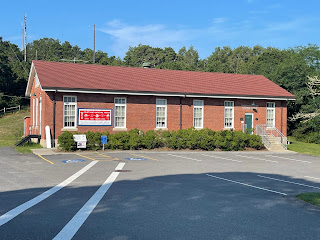Road Trip Update - WCC Chatham Marconi Maritime Center Activation - August 13, 2021
Yesterday, August 13, I was invited to activate EME communications from FN51 from the grounds of the historic Chatham Marconi Maritime Center: https://www.wccara.com/wcc
This site was built in 1914 by the Marconi company, but because of World War I, was never activated my Marconi. It was not possible to ship radio equipment from Europe to Cape Cod during the war.
The site was completed by a new company that became the iconic American brand, RCA. RCA was founded to re-organize the assets for the Marconi Company in the U.S.: https://www.rca.com/us_en/our-legacy-266-us-en
This site became one of the most important message traffic sites for communicating with commercial ships at sea. From the 1920's until 1997 when HF radio communications with ships was retired and replaced with satellite communications, this center known as WCC used CW only to handle traffic from thousands of ships. The Cape Cod WCC focused on the Atlantic Ocean, Mediterranean and the Indian Ocean.
A sister station in California, KPH, headquartered in Point Reyes handled the Pacific Ocean and shared coverage of the Indian Ocean. Several years ago I visited several of the historic West Coast sites as a guest of the owner who purchased several of the historic radio sites.
The Point Reyes station is operated regularly by an active group of amateur operators: https://www.nps.gov/pore/learn/historyculture/stories_communications.htm
The photo above is the buiding that was used by operators who handing ship traffic using the callsign WCC until 1993. The building is now a museum. One of my hosts was a CW traffic operator at WCC. He is also a 12th generation decendent of the founder of the town of Chatham from the year 1712.
During World War II the WCC was operated by the U.S. Navy and was the primary station that intercepted U-Boat radio traffic that was decrypted and used to win the War of the Atlantic.
In 1914 a 1-mile long receiving antenna supported by six 300 foot towers was built at the site. In the 1920's as long-haul communications started to transition from spark to CW medium-wavelength communications, the antennas were replaced with aerials more familur to us.







Hello Peter,
ReplyDeletei like your page here and i am always following your reports with text and pictures from the different acitivitis. Also nice that you add som Pictures of yourself and not just the station. Its allways nice to know the face behind the station :-)
Thank you for your activations and giving so much fun in hounting squares via the moon.
Vy 73 de Alex, DL1KDA